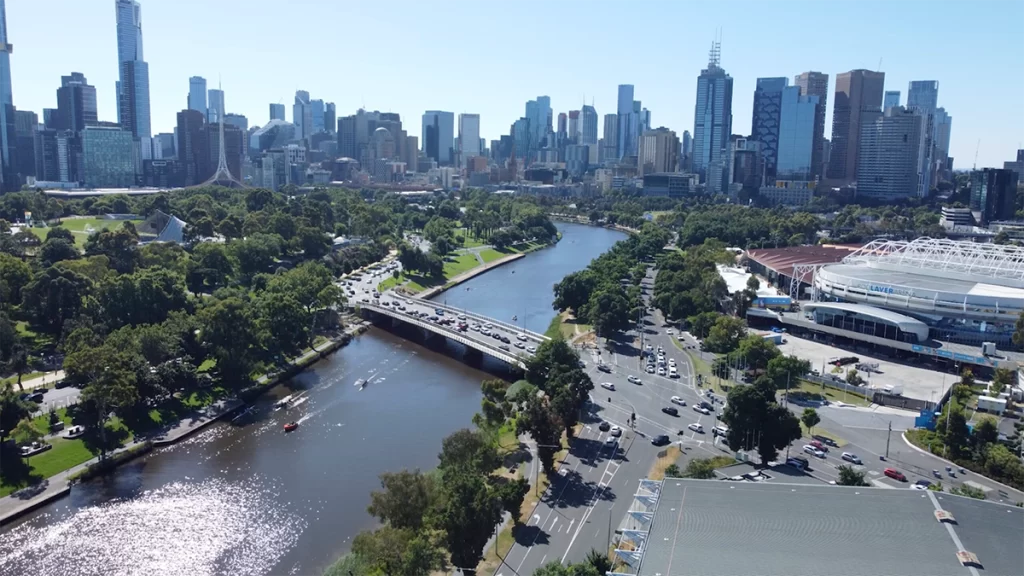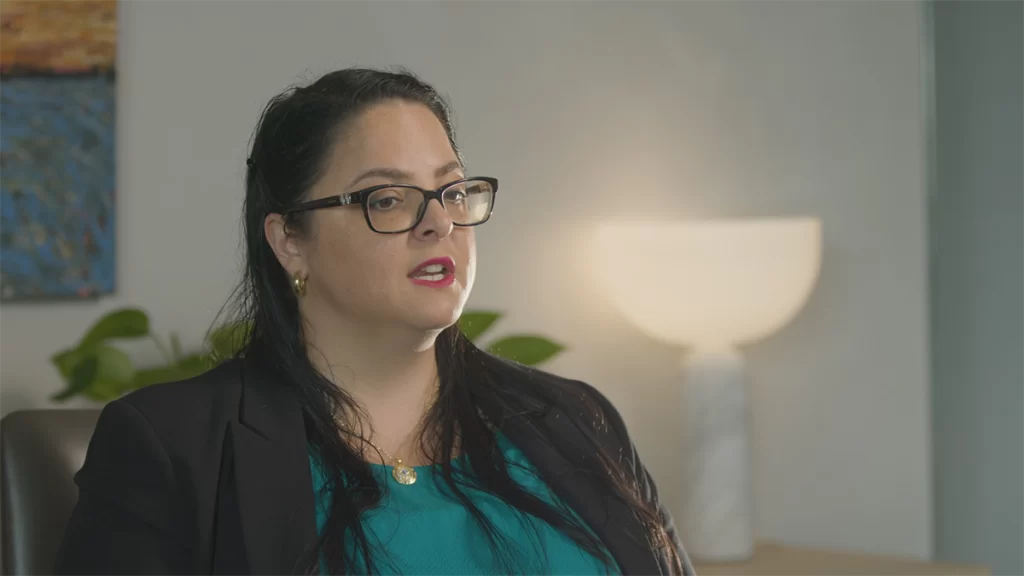How To Use Video To Improve Your Brand Engagement In 2024

In 2024, marketing is rapidly changing.
Across the full marketing landscape, we are starting to see a shift away from the ‘digital age’ of marketing, to a new age of marketing, known as the ‘immersion age’ of marketing.
The immersion age of marketing can be characterised by direct, two-way conversation between a brand and their clients. And vice versa.
It sees the need for genuine relationships to be built.
The current age moves away from the idea of push marketing, to instead aiming to have your clients become attracted to your brand, by using humour, core values and emotional based marketing.
What Is Brand Engagement?
Brand engagement, in its most simplistic definition, is a measurement of how strong a connection a client has to a brand. Irrespective of social media metrics.
It can help your brand identify how loyal your customer base is.
Brand engagement is a term that is critical in the modern age of marketing.
With connection, genuine relationships and two-way conversation being some of the main characteristics of the immersion age of marketing, brand engagement is the measurement of the impact of each of these.
So then, how can video be used by your brand to improve your brand engagement?
First of all, we have to understand why video is so beneficial for improved brand engagement.
Video is a storytelling platform, at its roots.
Video is there as a mechanism for your brand to grip your audience (your prospects and clients) to a narrative. To have them become enticed in the intricacies of your brand.
Ultimately, video is a tool to show your customers that you understand them.
And in turn, this helps your customers understand you.
A perfect recipe for strong brand engagement.
The 5 Best Ways To Use Video For Improved Brand Engagement In 2024
There are 5 pillars of video that your brand can use for improved brand engagement in 2024.
Education Films
A recent study found that a customer’s knowledge of a brand’s product or service has increased after watching a video about it. With 73% of customers purchasing the product or service as a result of the film.
This makes education-based videos a really key part of starting to build your connection with your customers.
An example of an effective education-based film would be, if you were a restaurant that prides itself on sourcing local, fresh ingredients, a video about the process of growing a crop, harvesting the crop, cleaning it, transporting it to the restaurant and then preparing the meal.
As another example, if you were a tourism-based company, offering private touring for overseas trips, a video educating viewers about how you identify places to visit, the process of selecting what locations and how you determine which locations will work well together for a fluid and enjoyable experience.
Anything that dives into where your product or service comes from, what impact it has on your clients and how it makes your brand unique are great starting points for education-based films.
Behind the scenes videos are great too!
Awareness Raising Films
Awareness raising film are in relation to your brands values.
A brand that uses this type of film incredibly well in their brand marketing is Dove.
One of Dove’s core values are social causes. And as a result, they produce some breathtaking films raising awareness for a variety of social causes.
One such film was a film raising awareness around the impact of social media on young girls.
80 percent of girls distort the way they look online by age 13. This is a horrifying statistic.
So, Dove produced a film to raise awareness for this, and reinforce to young girls that they are already beautiful, and they don’t need to distort their looks online.
This type of film is all about producing brand films to do with raising awareness around what it is your brand values.
In doing so, you create a talking point. It affiliates your brand with positive change, and most importantly, you’re not promoting yourself. Instead, you’re letting customers become attracted to your brand because you’re making positive change.
If you choose to promote yourself in this type of film, it takes away from the message, and your customers will make the assumption you’re raising awareness for your own personal gain.

Client social Proof Films
The client social proof film you will most likely already be very familiar with.
These are also known as testimonial films.
Testimonial films can be filmed in a few different ways.
One variation is just an interview with your client. They’ll talk through the experience of working with you, and provide feedback on the results provided by your brand.
An alternative variation is the interview mixed in with some shots of the client using your product, or you delivering your service. These shots are known as b-roll in video production.
The second variation is typically the more expensive investment.
However, if my clients have the budget for it, I always recommend for them to invest in an interview plus b-roll testimonial film, as it is a more pleasurable viewing experience for viewers, and nowhere near as dry as listening to someone speak for 90s straight, as seen in the interview only variation.
The second variation also helps to build your connection with your customers further, by showing a somewhat relatable situation, real life footage and real-life use of your product or service.
These videos are often well received by your prospects, because a fellow customer is speaking to them, as opposed to a member of your brand, with the latter often coming across as if you’re speaking down to your prospects.
Brand Social Proof Films
Brand social proof films are very similar to that of the client social proof films.
However, the key difference here is instead of your client showing what it is you do, you’re showing what it is your brand does.
This is the only type of film where you should consciously promote your brand.
An example of a brand social proof film would be a project highlight
Let’s say you’re a field of play company and have just completed a new athletics track development. In your project highlight film, you would discuss what it is you’ve done, the challenges that were presented to you, the solutions you provided to these challenges, and the final result.
To take this to another level, you can show behind the scenes of what it is you did throughout the project.
A similar idea can be applied for other companies too.
As another example, one of my clients are a commercial painting company.
We produce project highlights for them for selected projects they want to show off.
We film them before during and after the project is completed, whilst for a few bigger projects, we might incorporate a client interview with it too.
These videos are great, because they can be produced at any size of business and, they can be scaled to the project size
They can be filmed on a phone or high-end professional cameras, or with drones and lights.
Project highlight films can take behind the scenes videos to a whole other level.
Promotional Films
Promotion films are the north star of brand story films.
These are what all of the 4 previous brand film pillars lead towards.
In brand social proof films, you have the ability to promote your brand. And although this pillar is called a promotion film, you’re actually not promoting your brand at all. Let me explain.
In the brand social proof film, you are promoting your brand to your customers on a conscious level. You are being open about it, and they are aware this is what you are doing.
In promotion films, you let a story do the talking, and have the resulting effects of the story be affiliated with your brand.
This means that in essence, you are sub-consciously promoting your brand.
Through this film, you craft a relatable situation around an impact of your product, and tell a story about it.
There should be no logos or product placement where possible, and it should all be about engaging the viewer and getting them gripped to the narrative of the story.
Use emotion and humour to further strengthen the connection of the viewer to the film.
In the closing stages of the film, this is when you can overlay a logo or a wordmark. BUT only after you have provided a call to action.
Why after the call to action?
I’d like you to please put yourself in the shoes of your customer.
They are sitting watching your film, enjoying a pleasurable viewing experience where they are relaxed knowing they are not being sold to (consciously), and thus can sit back and be gripped by the narrative.
If you put a logo up before the call to action, then it becomes useless, as the viewer will raise their defensive guard because they will feel as though they are being sold to.
Whereas, with the logo after the call to action, you have already empowered your viewer to make change, they are motivated, and when they see your brand’s logo, they affiliate this empowerment and motivation (unconsciously) with your brand.
The Key Takeaways
In 2024, with the rise of immersion marketing, it is now more important than ever for brands to connect with their customers on a deep and emotive level, forming genuine relationships.
These 5 brand film pillars will empower your brand to improve your brand engagement and start to see success in the modern age of marketing.
Need A Hand Forging A Deep Connection With Your Clients?
It’s not always easy to forge a deep connection with your clients. Which is why we’re here to help.
Brand story films are your brand’s north star. They help you to make decisions internally, and act as the centrepiece of your marketing strategy.
If you’d like to learn more about how we can help you forge a deep, emotive connection with your consumer through a brand story film, contact us via:
didier@fixonmedia.com.au
+61 400 801 891
All the best,
Didier Le Miere
Director | Fixon Media Group
